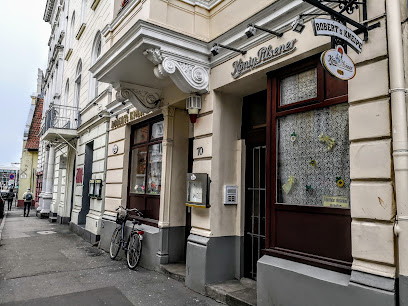
Idyllic Retreat at Froschkönigteich
Discover the enchanting Froschkönigteich in Lübeck's Stadtpark, a serene oasis with a fairytale charm, perfect for relaxation and a touch of magic in the heart of St. Gertrud.
Froschkönigteich, nestled within Lübeck's charming St. Gertrud district, offers a serene escape into nature. This small, circular pond, known as the Frog Prince Pond, is a delightful feature of the larger Stadtpark (City Park). The park itself, established in 1901, is characterized by its lush greenery, winding pathways, and diverse collection of trees, some of which are designated as historical landmarks. Froschkönigteich, with its whimsical name and tranquil setting, provides a perfect spot for relaxation and contemplation. Visitors can enjoy the peaceful atmosphere, observe local wildlife, and appreciate the beauty of this well-maintained urban oasis. The pond's charming sculpture of the Frog Prince adds a touch of fairytale magic, making it a particularly enchanting destination for families and those seeking a moment of respite from the bustling city. Whether you're a local resident or a tourist exploring Lübeck, Froschkönigteich offers a refreshing and picturesque experience.
A brief summary to Froschkönigteich
- Roeckstraße, Lübeck, St. Gertrud, DE
Local tips
- Visit during the spring or summer months to experience the park at its most vibrant, with blooming flowers and lush greenery.
- Bring a picnic blanket and enjoy a relaxing meal by the pond, soaking in the peaceful atmosphere.
- Take a stroll through the Stadtpark to discover other hidden gems, such as the larger lake and the diverse collection of trees.
- Visit the nearby St. Gertrude's Church to admire its Gothic architecture and learn about its history.
- Combine your visit with a trip to the Museum Behnhaus Drägerhaus to explore its collection of 19th- and 20th-century art.
Getting There
-
Walking
From the Burgtor, a historic city gate, Froschkönigteich is approximately a 20-minute walk. Head east along Travemünder Allee, then turn right onto Roeckstraße. Continue along Roeckstraße until you reach the Stadtpark entrance on your left. The Froschkönigteich is located within the park, a short walk from the entrance. This route is straightforward and passes through residential areas.
-
Public Transport
From Lübeck ZOB/Hauptbahnhof (central bus/train station), take bus line 3, 11, 15, 21 or 335 to the Roeckstraße stop. From there, it's a short walk to the Stadtpark entrance. Check local transit schedules for current fares, but a single ticket within Lübeck typically costs around €3.00.
-
Driving
If driving, navigate to Roeckstraße in Lübeck. Limited street parking is available along Roeckstraße and surrounding streets. Parking fees typically apply Monday to Saturday from 10:00 to 18:00, costing approximately €1.20 per hour. A day ticket for parking in designated areas can be purchased for around €6.00. Consider using the Parkplatz Roeckstraße at Roeckstraße 1-5.
Discover more about Froschkönigteich
Iconic landmarks you can’t miss
Froschkönigteich
0.0 km
Discover the enchanting Froschkönigteich in Lübeck's Stadtpark, a serene oasis with a fairytale charm, perfect for relaxation and a touch of magic in the heart of St. Gertrud.
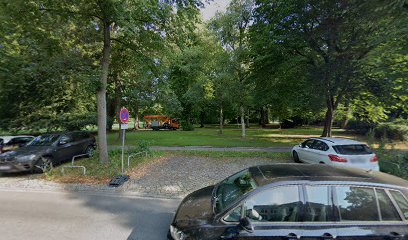
Jerusalemsberg
0.7 km
Discover Jerusalemsberg in Lübeck: A historical landmark offering serene green spaces, a Gothic shrine, and panoramic city views, perfect for history enthusiasts and peaceful retreats.
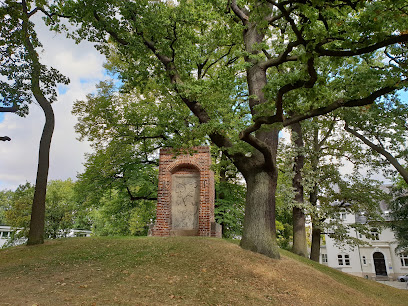
Gedenkstätte Jerusalemsberg
0.8 km
Reflect on history and honor the victims of the Holocaust at Gedenkstätte Jerusalemsberg in Lübeck, a serene memorial park offering a space for contemplation and remembrance.
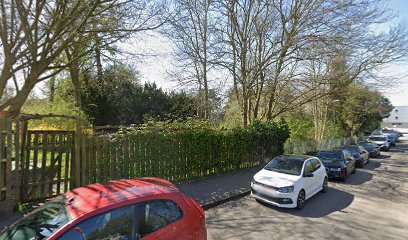
Burgtor in Lübeck
0.9 km
Discover the Burgtor in Lübeck: a historic northern gate, a masterpiece of Gothic architecture, and a gateway to the city's Hanseatic past and vibrant present.
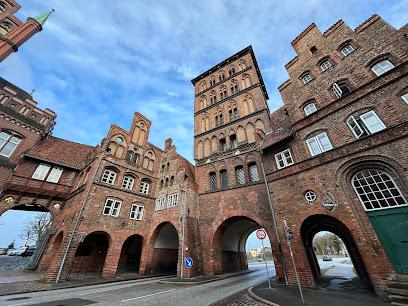
Klughafenbrücke
0.9 km
Discover the shimmering Klughafenbrücke in Lübeck, connecting history and modernity with scenic views of the Kanaltrave and easy access to UNESCO World Heritage sites.
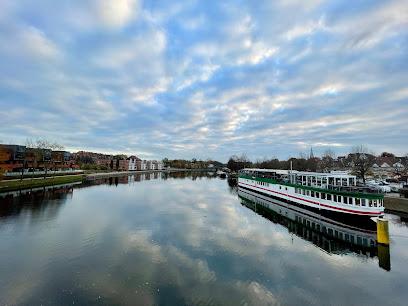
Schwerlastkran
1.0 km
Discover the iconic Schwerlastkran in Lübeck, a historic crane symbolizing the city’s maritime heritage and engineering marvels.

Koberg
1.1 km
Discover Koberg in Lübeck: A captivating square where medieval architecture meets Hanseatic history, offering a unique glimpse into the city's rich cultural heritage.
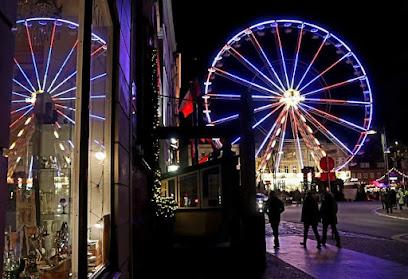
Lübeck Altstadt
1.2 km
Explore Lübeck's Altstadt, a UNESCO World Heritage site, where medieval charm meets modern vibrancy in a captivating blend of history, architecture, and Hanseatic heritage.
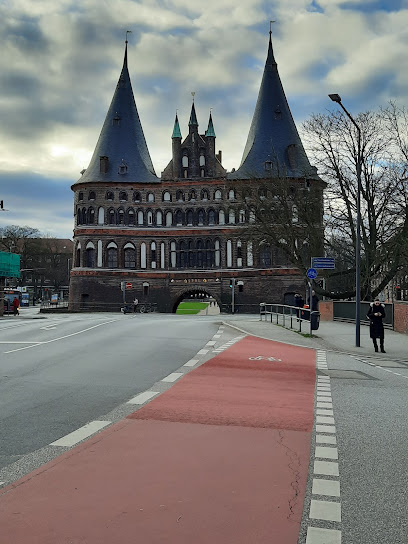
Lübecker Altstadt
1.4 km
Explore Lübeck's UNESCO-listed Altstadt: a captivating blend of medieval architecture, Hanseatic history, and cultural treasures, offering an unforgettable journey through time.

The Broken Bells Of St. Mary's
1.6 km
Witness history etched in shattered bells at Lübeck's St. Mary's Church, a powerful memorial to peace within a Brick Gothic masterpiece, a UNESCO World Heritage site.

Reliefkarte von Lübeck
1.7 km
Discover Lübeck's historic heart: Markt, where centuries of history meet vibrant modern life in a UNESCO World Heritage setting.
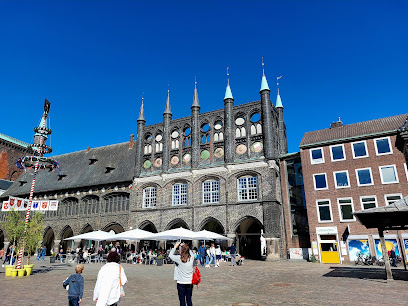
Palais Rantzau - ein Haus der Deutschen Stiftung Denkmalschutz
1.9 km
Discover the historical elegance of Palais Rantzau in Lübeck, a captivating blend of neogothic architecture and medieval history, now home to the Schleswig-Holstein Music Festival.
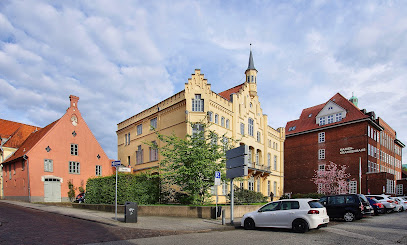
Lübecker Löwen
2.1 km
Discover the majestic Lübecker Löwen, symbols of Lübeck's Hanseatic heritage, guarding the historic Burgtor and Holstentor in the heart of this UNESCO World Heritage city.

Puppenbrücke
2.1 km
Cross Lübeck's historic Puppenbrücke, adorned with captivating statues, and step into a world where art, history, and Hanseatic charm converge in a picturesque setting.

Bismarckdenkmal
2.3 km
Discover the Bismarckdenkmal in Lübeck, a historical landmark celebrating the legacy of Otto von Bismarck amidst serene gardens, offering a glimpse into Germany's past.

Unmissable attractions to see
Steingarten im Schulgarten
0.7 km
Explore the tranquil Steingarten im Schulgarten in Lübeck, a perfect blend of nature and education for all visitors.
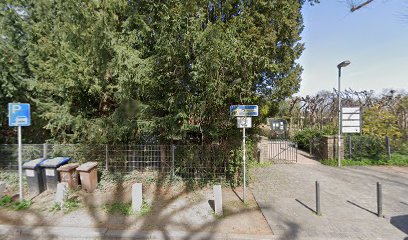
Molchteich
0.7 km
Experience the tranquility of Molchteich in Lübeck, a perfect blend of nature and relaxation in a historic city.
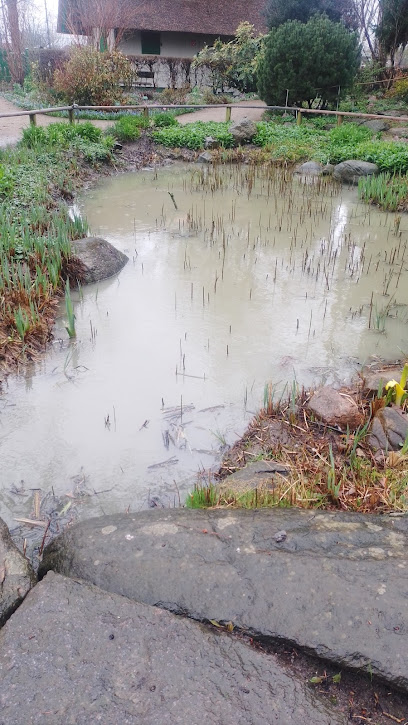
Goldfischbrunnen
0.8 km
Discover the tranquility of Goldfischbrunnen in Lübeck, a captivating fountain surrounded by lush gardens, perfect for a peaceful retreat.
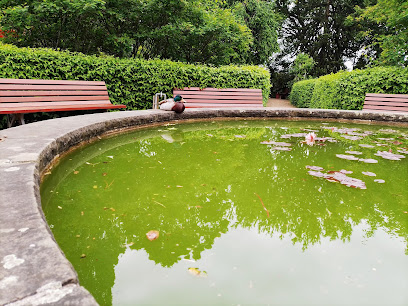
Schulgarten Lübeck
0.8 km
Explore the lush landscapes of Schulgarten Lübeck, a captivating botanical garden perfect for nature lovers and families seeking tranquility.
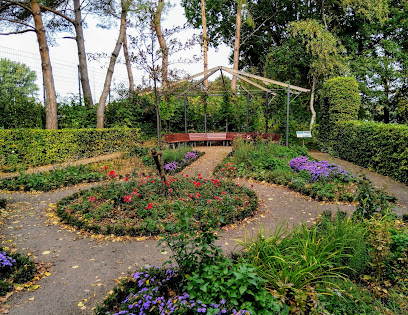
Burgtorbrücke
0.8 km
Explore the stunning Burgtorbrücke in Lübeck, a magnificent Gothic bridge that connects history with breathtaking views of this UNESCO World Heritage city.
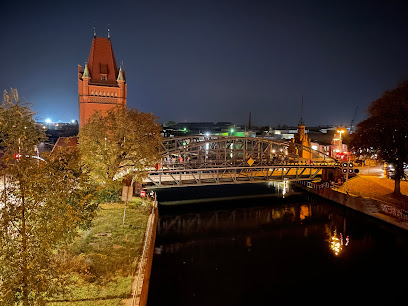
Zöllnerhaus
0.9 km
Explore Zöllnerhaus in Lübeck, where history and architecture blend seamlessly in a captivating tourist attraction.
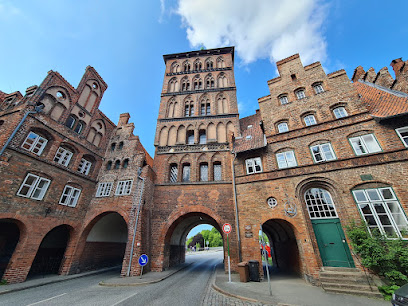
Burgtor
0.9 km
Discover the historical Burgtor in Lübeck, a magnificent gateway that reflects the city’s rich heritage and architectural beauty.
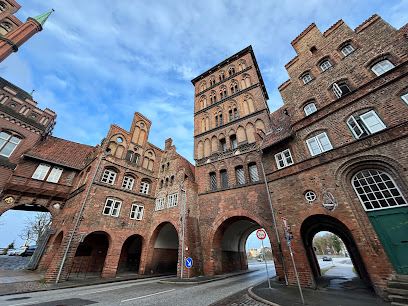
Burgkloster Monasterio del Castillo
0.9 km
Explore the Burgkloster Monasterio del Castillo, a UNESCO World Heritage Site in Lübeck, showcasing stunning Gothic architecture and rich monastic history.
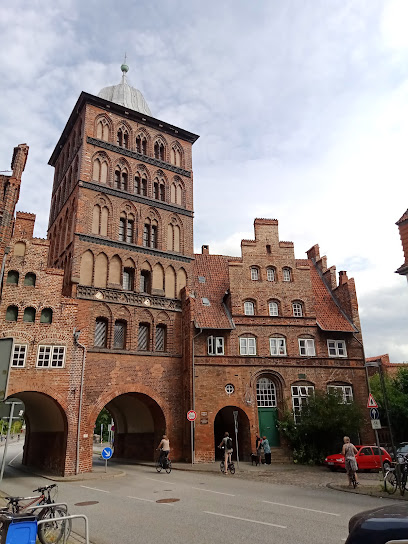
Gloxin Stiftungshaus
0.9 km
Discover the serene beauty and rich history of Gloxin Stiftungshaus in Lübeck, a charming tourist attraction steeped in cultural heritage.
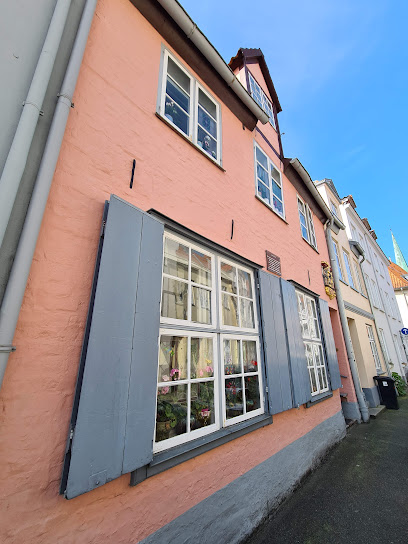
Aussichtspunkt Hansemuseum
0.9 km
Experience the breathtaking views of Lübeck from the Hansemuseum Observation Deck, a perfect blend of history and scenic beauty.
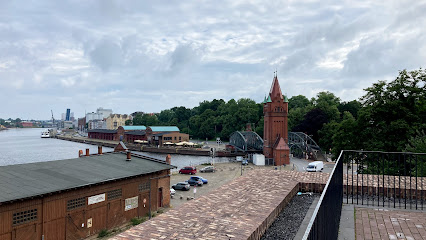
European Hansemuseum
1.0 km
Explore the European Hansemuseum in Lübeck, where the legacy of the Hanseatic League comes alive through immersive exhibits and rich maritime history.
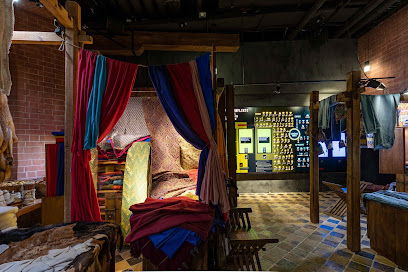
Skulptur der Maria Magdalena
1.0 km
Explore the rich artistic heritage of Lübeck at the Skulptur der Maria Magdalena, a serene tribute to Mary Magdalene in the heart of the historical Altstadt.
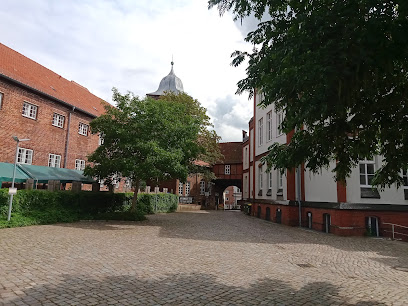
Panorama Gang
1.0 km
Discover the breathtaking views of Lübeck at Panorama Gang, a must-visit tourist attraction that captures the city's cultural heritage and stunning landscape.
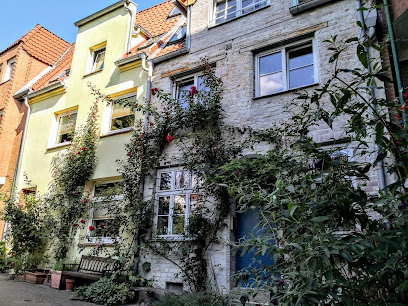
Hanseschiff „Lisa von Lübeck“
1.0 km
Discover the maritime history of Lübeck aboard the Hanseschiff ‘Lisa von Lübeck’, a floating museum celebrating the Hanseatic League's legacy.
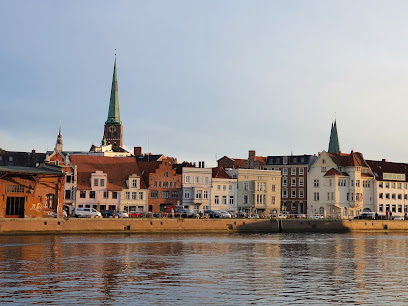
Hospital of the Holy Spirit
1.1 km
Discover Lübeck's rich history at the Hospital of the Holy Spirit, a stunning medieval architectural masterpiece and vital historical landmark.
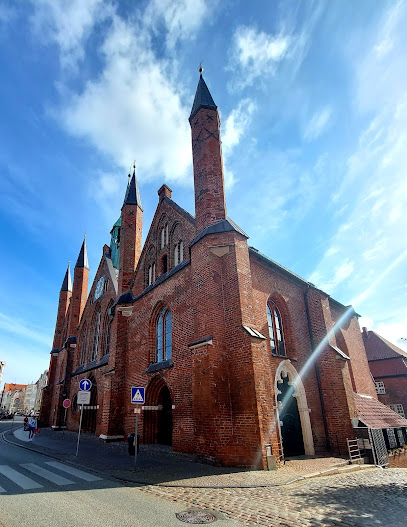
Essential places to dine
Ristorante La Casa
0.6 km
Savor authentic Italian cuisine at Ristorante La Casa in Lübeck – where every dish tells a story of tradition and passion.
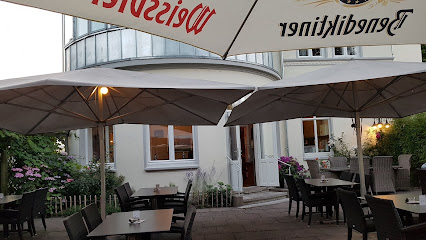
KOCHWERK Lübeck - das Restaurant
0.7 km
Experience exceptional local cuisine at KOCHWERK Lübeck - a buffet restaurant celebrating fresh ingredients and delicious flavors.
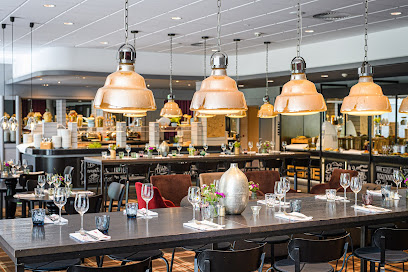
Ristorante Da Angelo
0.9 km
Discover authentic Italian flavors at Ristorante Da Angelo in Lübeck – where every dish is crafted with passion and tradition.
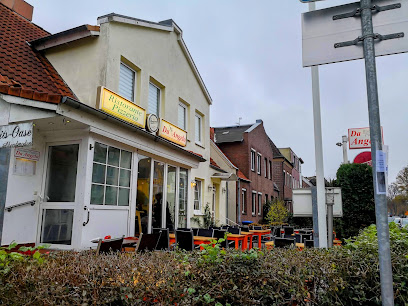
Seaside - Lübeck
1.0 km
Experience authentic Italian cuisine at Seaside - Lübeck, where every dish tells a story of tradition and flavor.
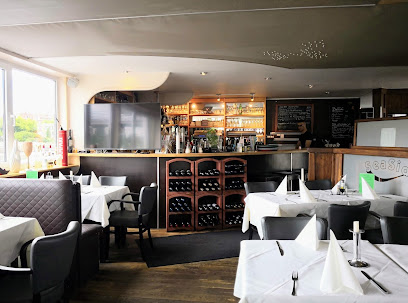
Taj Mahal Restaurant
1.0 km
Discover the vibrant flavors of India at Taj Mahal Restaurant in Lübeck - where every dish tells a story.
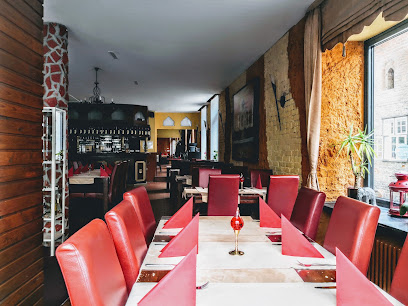
Lübecker Kartoffelkeller
1.0 km
Experience authentic German cuisine at Lübecker Kartoffelkeller, where hearty potato dishes meet charming ambiance in Lübeck's historic old town.
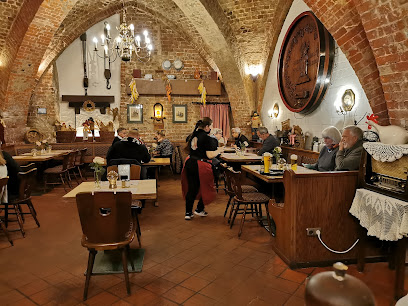
DAS KÖSTLICH-Lübeck Altstadt
1.1 km
Experience exceptional German cuisine at DAS KÖSTLICH in Lübeck's historic Altstadt - where tradition meets innovation.
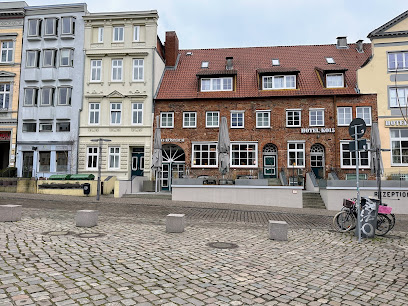
Blechtrommel
1.1 km
Experience authentic Polish cuisine at Blechtrommel in Lübeck's historic district - a cozy eatery serving traditional dishes full of flavor.
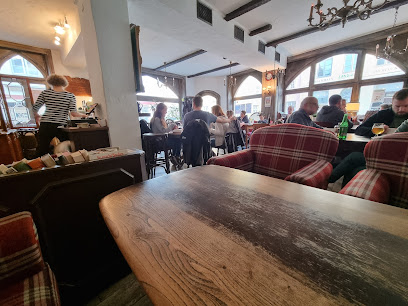
Meilenstein Restaurant & Bar - Lübeck
1.1 km
Experience fine dining at Meilenstein Restaurant & Bar in Lübeck—where traditional German cuisine meets modern culinary artistry.
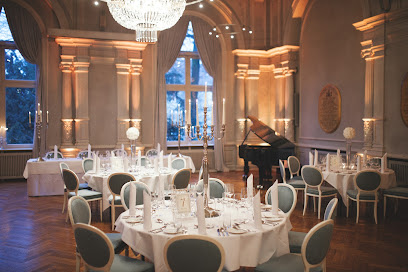
Nordwind - Lübeck
1.1 km
Experience authentic German flavors at Nordwind in Lübeck - perfect for breakfast or celebrating special occasions with exquisite wedding buffets.
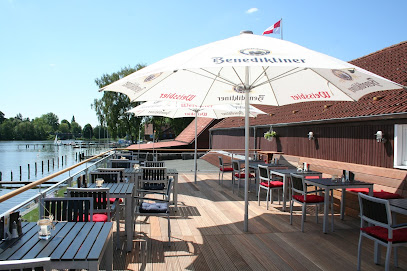
Johanna Berger
1.3 km
Experience the culinary magic of Lübeck at Johanna Berger - where tradition meets innovation in every dish.
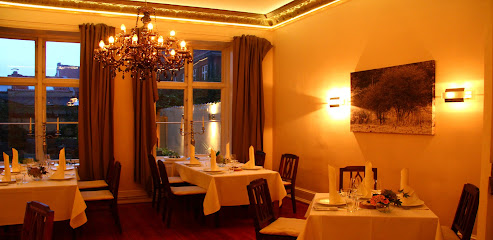
Prätor-Haus - Da Luigi
1.3 km
Experience authentic Italian cuisine at Prätor-Haus - Da Luigi in Lübeck's historic Altstadt – where flavor meets tradition.
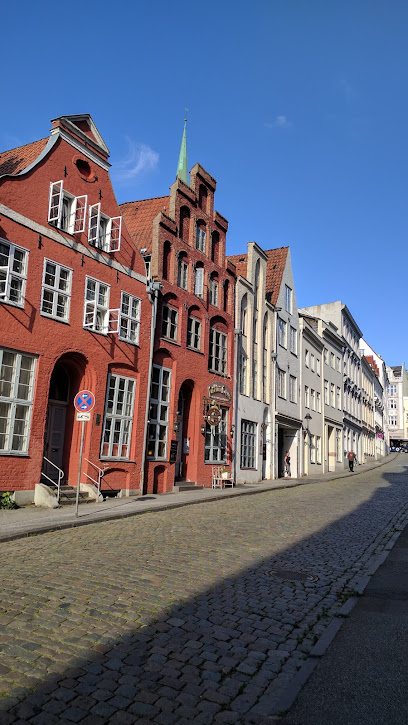
Das Kleine Restaurant
1.3 km
Experience authentic German cuisine at Das Kleine Restaurant in Lübeck - where tradition meets taste.
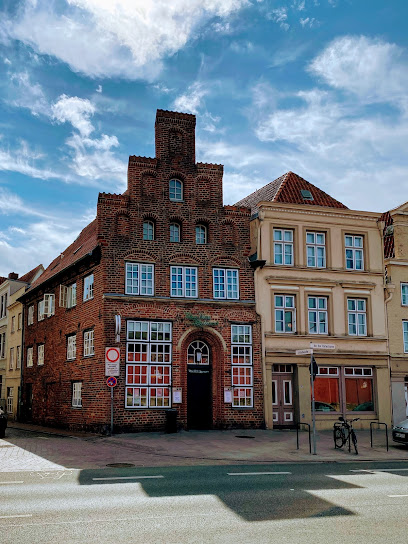
The Newport Restaurant & Marina - Lübeck
1.4 km
Experience exquisite dining at The Newport Restaurant & Marina in Lübeck – where culinary excellence meets breathtaking waterfront views.
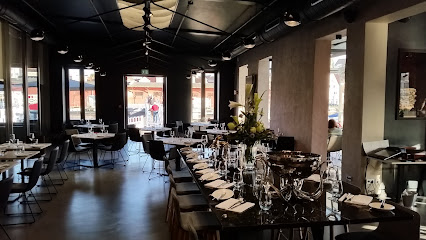
Fangfrisch
1.4 km
Experience the best of Lübeck's seafood at Fangfrisch, where fresh ingredients meet culinary excellence in a cozy atmosphere.
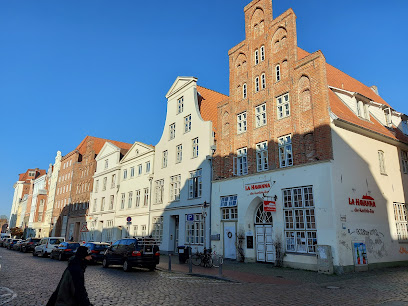
Markets, malls and hidden boutiques
Laden 15 - Lübeck
1.3 km
Explore Laden 15 in Lübeck for unique clothing, stylish accessories, and memorable gifts that capture the essence of your travels.
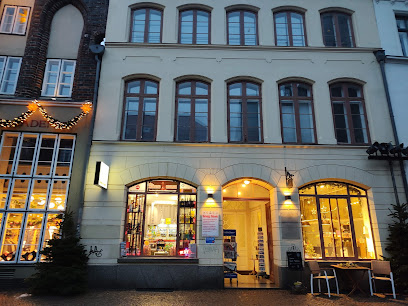
Zara
1.4 km
Discover the latest fashion trends at Zara in Lübeck's historic old town, where style meets affordability in a vibrant shopping experience.
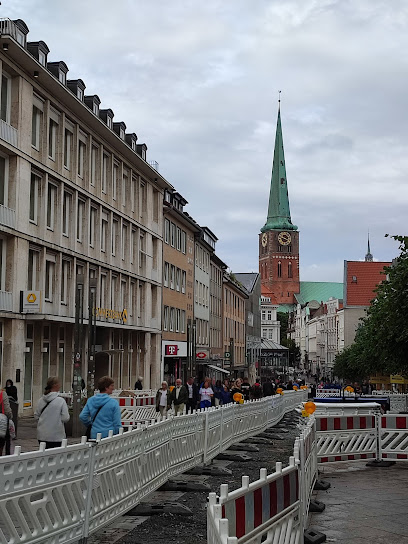
Nanu Nana
1.4 km
Explore Nanu Nana in Lübeck for charming gifts, unique crafts, and delightful home goods that capture the spirit of your travels.
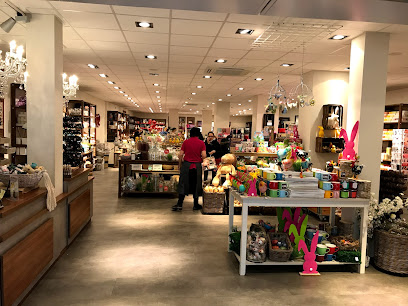
HERZENSWUNSCH concept store
1.4 km
Explore HERZENSWUNSCH in Lübeck: A charming concept store offering unique gifts and local treasures that celebrate the spirit of craftsmanship.
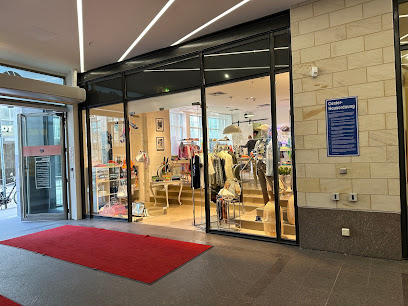
Lichthof Lübeck
1.4 km
Discover a unique blend of shopping and local culture at Lichthof Lübeck, a must-visit mall in Lübeck's historic center.
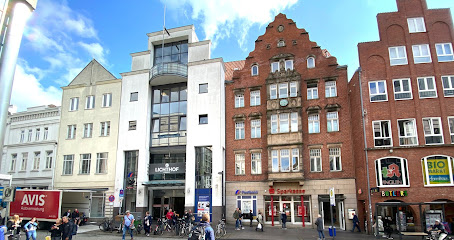
BUTLERS@home24 Lübeck Königstraße
1.5 km
Discover unique gifts and stylish home goods at BUTLERS@home24 Lübeck Königstraße, a must-visit shop in the heart of Lübeck's historic district.
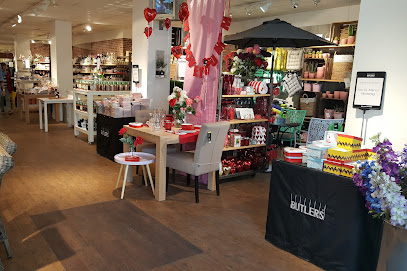
INDLU design store - Handmade in South Africa
1.5 km
Explore INDULU Design Store in Lübeck for unique handmade South African gifts, fashion accessories, and gourmet treats that celebrate local craftsmanship.
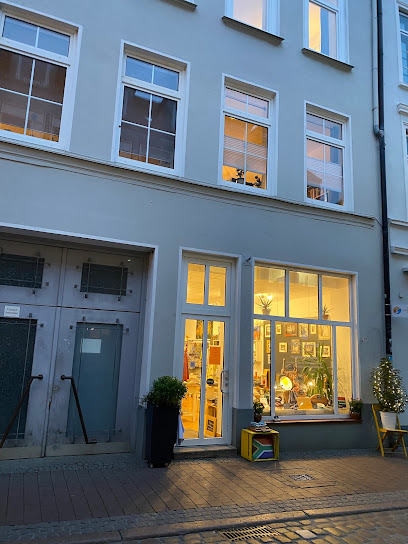
Flying Tiger Copenhagen
1.5 km
Explore a whimsical gift shop in Lübeck filled with unique, affordable items for all ages at Flying Tiger Copenhagen.
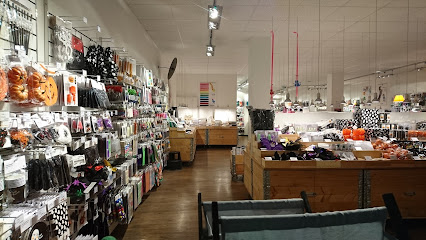
Neue Liebe
1.5 km
Immerse yourself in Lübeck's fashion scene at Neue Liebe, a boutique offering unique clothing and accessories in a historic setting.
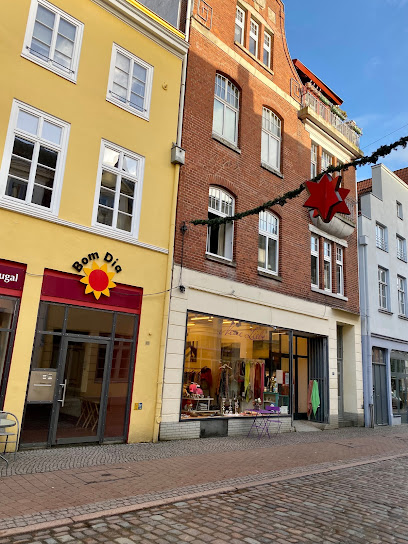
Vintage Vogue - Retro Boutique
1.5 km
Explore Vintage Vogue in Lübeck, a retro boutique offering a curated selection of unique vintage clothing and accessories that embody timeless style.
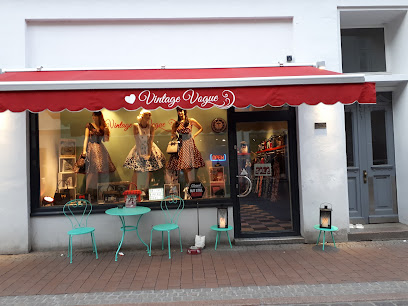
Elfenreich
1.5 km
Discover unique fashion treasures at Elfenreich in Lübeck's charming Altstadt, where style meets local craftsmanship.
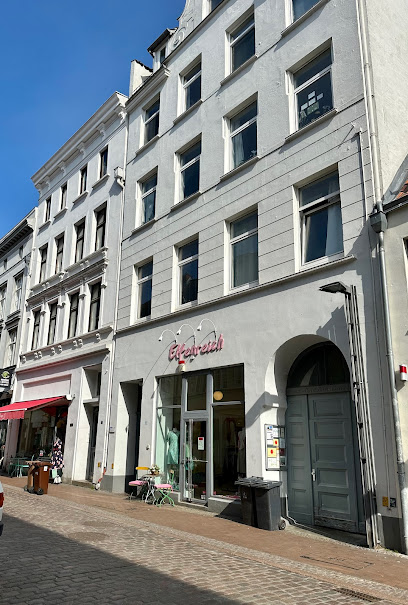
C&A
1.5 km
Discover the latest fashion trends at C&A in Lübeck, your go-to clothing store for stylish apparel for the whole family.
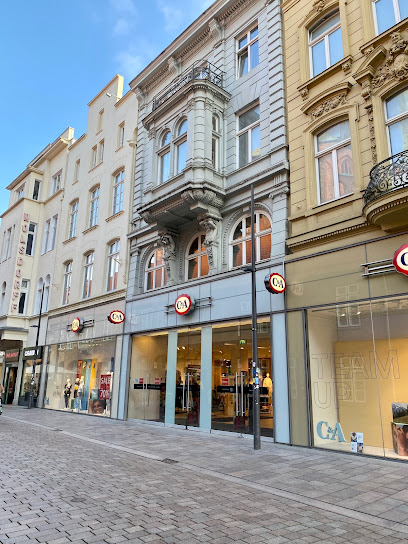
Michaelsen Scandinavian Living
1.5 km
Explore the charm of Scandinavian design at Michaelsen Scandinavian Living in Lübeck, where unique gifts and home goods await you.
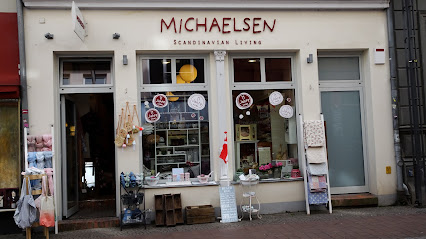
AUST Fashion Lübeck
1.5 km
Explore AUST Fashion Lübeck, the epitome of style and local charm in the heart of Lübeck's enchanting Altstadt.
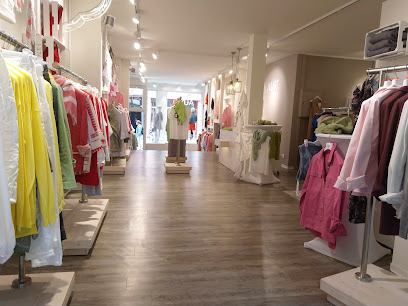
Lübeck Laden
1.5 km
Explore Lübeck Laden, a charming gift shop in Lübeck's Altstadt, perfect for unique souvenirs and local crafts to remember your visit.
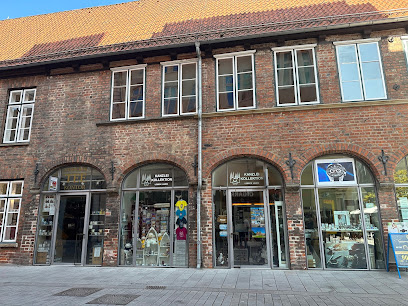
Essential bars & hidden hideouts
Tonfink - Kulturcafé & Bar - Lübeck
1.0 km
Experience the vibrant cultural atmosphere of Tonfink, a unique bar and café in Lübeck, known for live music and delightful beverages.
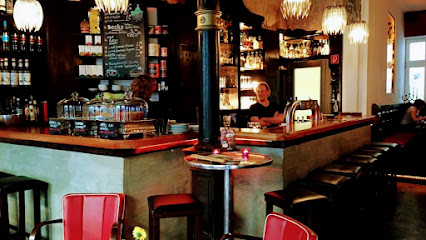
Gotteskeller
1.2 km
Experience the vibrant nightlife of Lübeck at Gotteskeller, a lively bar offering an extensive drink selection and a unique atmosphere.

Marli-Treff
1.2 km
Discover the lively Marli-Treff pub in Lübeck, a local favorite for drinks, snacks, and an authentic experience of German nightlife.
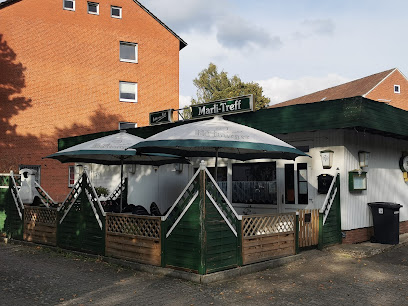
Weltwirtschaft - Lübeck
1.2 km
Experience the vibrant nightlife of Lübeck at Weltwirtschaft, a lively bar offering a unique atmosphere and excellent drinks to enjoy with friends.
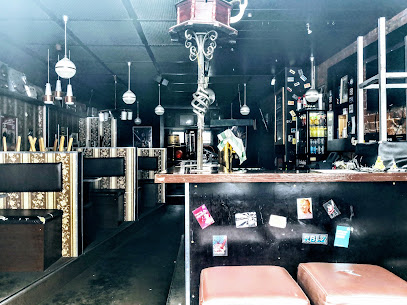
Traffico Cocktailbar, Restaurant und Café - täglich bis Open End!
1.3 km
Experience the vibrant nightlife of Lübeck at Traffico Cocktailbar, where delicious cocktails, gourmet dishes, and great atmosphere await.
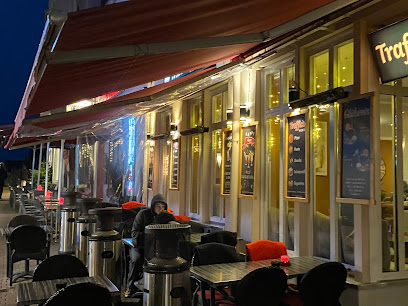
La Havanna
1.3 km
Discover the vibrant flavors of Cuba at La Havanna, a lively bar and restaurant in Lübeck offering authentic cuisine and cocktails.
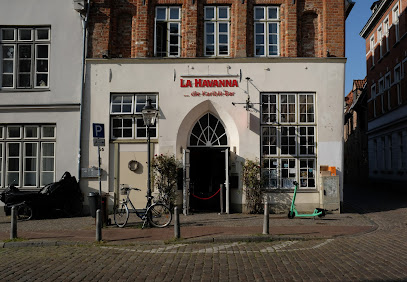
Torrio's - American Bar
1.3 km
Experience the vibrant American bar culture in Lübeck at Torrio's, where good drinks and lively atmosphere await.
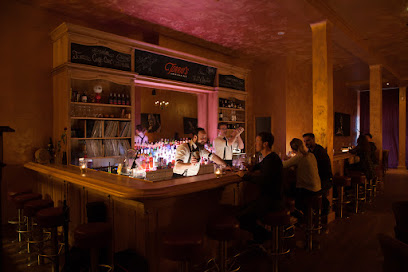
Kandinsky - Lübeck
1.4 km
Discover Kandinsky, a unique bar and restaurant in Lübeck's Altstadt, offering a vibrant atmosphere and diverse culinary delights.
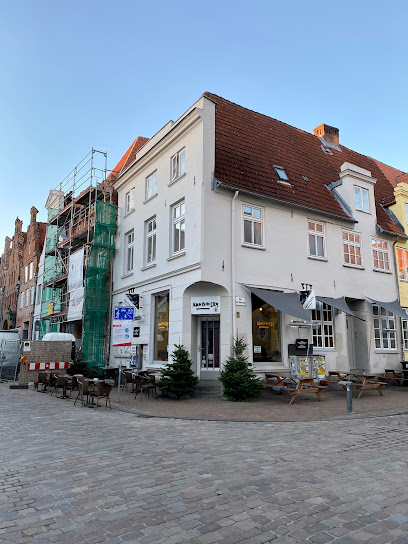
Morgana Pub
1.4 km
Discover the vibrant nightlife of Lübeck at Morgana Pub, a lively bar offering a variety of drinks in a welcoming atmosphere.
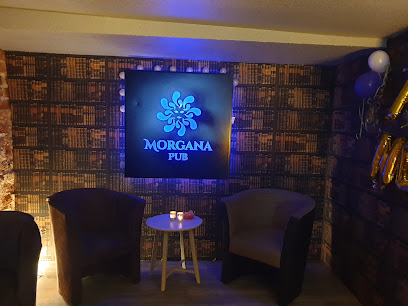
Sternschnuppe Lübeck
1.4 km
Discover the vibrant nightlife of Lübeck at Sternschnuppe, a cozy bar offering a diverse drink selection in the heart of the historic city.
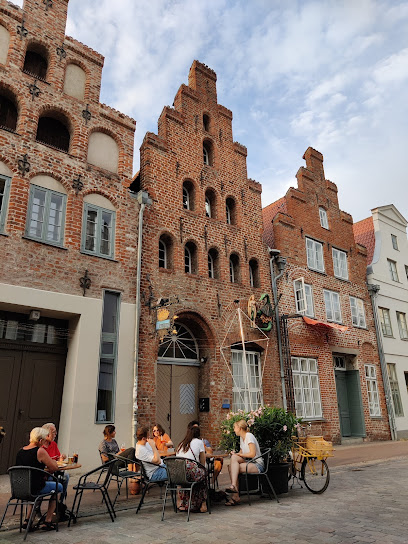
Cocoloco Bar - Lübeck
1.5 km
Discover the vibrant nightlife of Lübeck at Cocoloco Bar, where unforgettable evenings come alive with drinks, music, and a lively crowd.
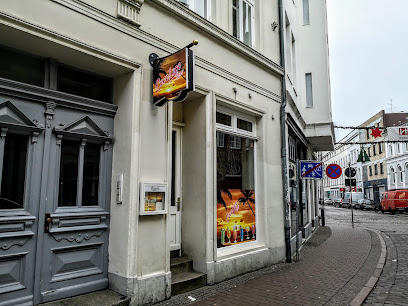
Rauchfang - Lübeck
1.5 km
Experience the warmth of Lübeck at Rauchfang, a cozy pub offering local brews and a vibrant atmosphere in the heart of the city.
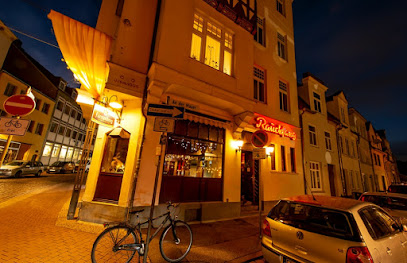
Sabbelkiste
1.6 km
Experience the lively atmosphere at Sabbelkiste, Lübeck's local bar offering a delightful selection of drinks and a vibrant ambiance.
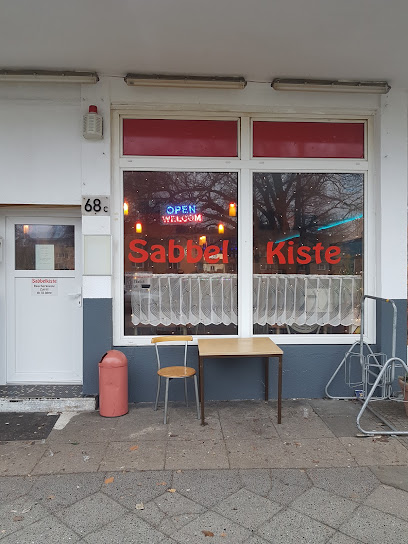
MENGwirtschaft
1.6 km
Discover MENGwirtschaft, a cozy bar in Lübeck's Altstadt, where local culture meets delightful drinks in a welcoming atmosphere.
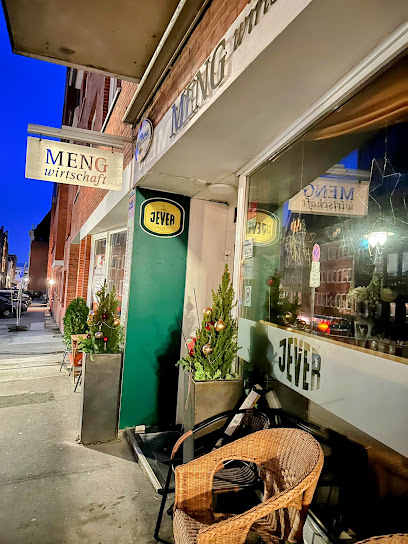
Roberts Kneipe - Lübeck
1.6 km
Experience the authentic taste of Lübeck at Roberts Kneipe, a cozy pub offering local brews and hearty meals in a historic setting.
